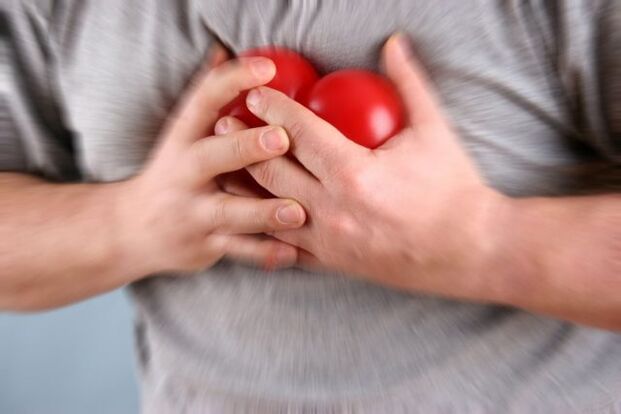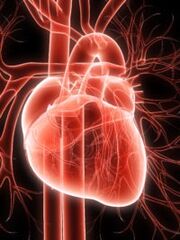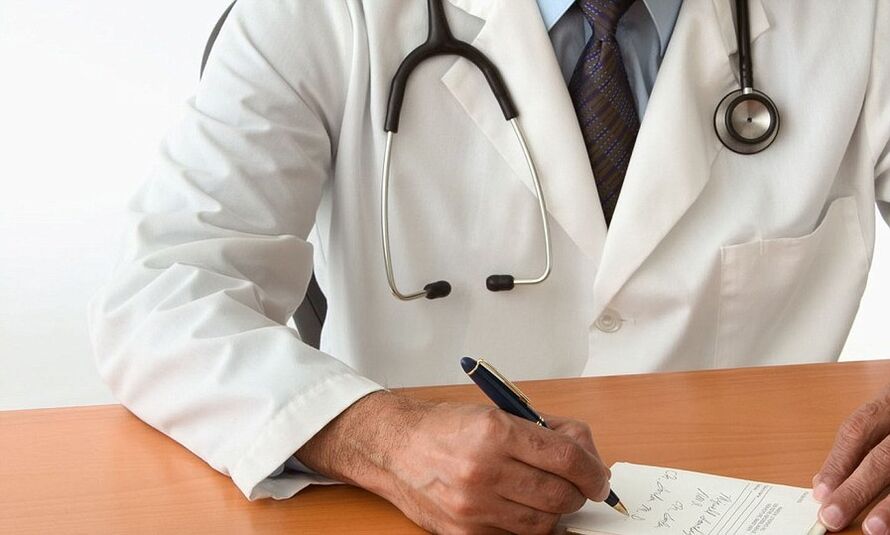Hypertonic disease is one of the most common pathology of the Cardian sphere currently diagnosed with each third resident of our planet aged 45. In recent years, the disease has become much younger, and now often among the number of patients with hypertension you can see very young with high pressure. The main danger of the pathological condition lies in its complications. GB can lead to heart attack and stroke, cause the decay of the elevation of the main vessels, causes the development of gross impaired renal functioning and a sharp deterioration of the quality vision.
Human blood pressure has top, heart rate or systolic value, as well as diastolic pressure or its lower, renal level. According to WHO standards, the norm of these indicators should not be more than 139/89 mm Hg. Art. , Otherwise it is common to discuss hypertension. Early diagnosis and timely treatment of hypertension - a person's opportunity to prevent pathological changes from many internal bodies, which will maintain health and enjoy a full life for many years.
Reasons
Unfortunately, modern medical science has not yet been able to solve the increasing causes of hypertension, but most of them are known for the doctors. To identify which factor led to disease development, only an experienced specialist, which in the diagnosis process benefits not only his knowledge, but also the results of numerous studies that confirm or refuse the presence of hypertension signs in a person.
The main reason for the growth of blood pressure is a violation of the activities of the sympathetic adrenaline system of a person, ie constant irritation of the Center responsible for narrowing bowls in the brain.
This can happen under the influence of numerous exots, as well as endogenous factors that contribute to sudden spasms of blood vessels.
Symptoms of hypertension can occur in humans with the exogenous factors in the risk of the development of the pathological condition:
- Frequent stress and strong nerve tension;
- irregular diet;
- Sedentary lifestyle;
- Improper working day, night shift work;
- Regular consumption in large quantities of strong alcohol and smoking;
- Drugs;
- Intense sports.
Among the endogenous factors, age and poor heredity come to the forefront, when the disease can be moved from parents to a child. Also, the development of hypertension contributes:
- atherosclerosis of vascular lesions;
- obesity;
- Metabolic diseases, especially, diabetes melitus, hypertyroidism;
- Kidney disease;
- Increased levels of calcium and sodium in the blood;
- Hormonal changes, which are the most common cause of high pressure in women during pregnancy and menopause.
Classification
There are currently more classifications of hypertension. The disease is usually characterized by the nature of the course, the presence of complications, development reasons, pressure indicators and more.
Modern cardiologists vary several degrees of hypertension (depending on high pressure indicators):
- 1 Pressure degree is growing at 159-140 / 99-90 mm Hg. Art. ;
- 2 degrees - mechanical tonometer arrows are diagnosed, indicator 179-160 / 109-100 mm RT. Art. ;
- 3 degrees - persistent or periodic pressure increases more than 180/110 mm Hg. Art.
According to the generally accepted classification of who, there are such stages of the disease:
- 1. a gradual increase in pressure without damaging targeted organs;
- 2 phases - presence of signs of damage to internal organs, including the main target of heart, blood vessels, eye structures, brains and kidney;
- Phase 3 - Stable increase in blood pressure in relation to the background of the development of complications, from the manifestations that a person may die.
Hypertensive disease has its own types of electricity, including:
- Benign type or controversial GB variant, when the symptoms of pathology develop very slowly, for tens of years, and the risk of complications is assessed as a minimum;
- Malignant disease in which sharp jumps in the pressure, the lesions of target bodies and frequent hypertone crises (this version of the disease is difficult to borrow on drug therapy).
Symptoms
The disease at the initial stages of its development revenue almost asymptomatism, which makes it difficult for its early detection. In such patients, it can be found to increase pressure by accident when you pass by physical examination or during the usual reception in the clinic.

The more complex type of hypertension is characterized by a number of features that significantly exacerbate the quality of life of the person and are the reason for its attractiveness to experts. The main symptom of the disease is to increase blood pressure above 140/90 mm Hg. Art. This condition causes development of headaches, which are the result of reflexes narrowing of the brain container. As a rule, people prone to hypertension complain about the appearance of pain in the napes and temples that are pulsed, which is characterized by their serious and sudden development. Such pain and pulsation are not passed after taking analgesic means.
Often hypertension feels solo dizziness, which can happen after performing simple work. The symptom is often accompanied by nausea and vomiting, as well as general weakness due to increasing intracranial pressure. The narrowing of the hearing apparatus is caused by noise in the ears when it seems to the person that his ears are very laid, and he practically loses his ability to normally notice the sounds of the environment.
Violation of coronary blood flow leads to the development of myocardial ischemia. Such patients have shortness of breath and rag pain that are good for nitrates correction. The organ at this time works in improved mode so that the blood series could be pushed into narrowed stretches of the trunk. Each attack by Angine Pectoris follows a fast pulse, the heart beat and the risk that such an incredible complication of the pathological condition will appear as a myocardial infarction.
In addition to hypertension, weakened eyes with the sharp worsening of vision and the development of hypertension angiopathy of the retina boat. The bottom of the eye is also included in the pathological process, which swells and squeezes the visual nerve. At the moment, the person records "Goosebumps" in front of his eyes, darkened circles and the like.
Complications of high pressure symptoms in women most often occurs during menopause when menopause occurs. During this period, hormonal restructuring occurs in the body of a stimuli sex representative with a violation of the production of biologically active substances that control the normal level of pressure. That is why hypertension is the most common consequence of menopause in women.
Complications
GB refers to the number of sub-tilting diseases that slowly progress and very often diagnosed in the phase of the first complications of the pathological procedure. With constant increase in blood pressure in targeted bodies, dystrophic and sclerotic changes take place, which leads to gross functionality disorders. First of all, the kidneys, brain, heart, visual analyzer and blood vessels suffer from arterial hypertension.

There are several risk factors that affect the development rate of complications by hypertension and the degree of their seriousness:
- Bad habits, especially smoking;
- Sedentary lifestyle and increased body mass index;
- Increased blood cholesterol and hyperglycemia;
- Frequent stresses;
- a lack of potassium and magnesium in the body;
- Age-relefined changes;
- Hereditary predisposition.
With a hypertensive disease, the heart is forced to work in high load conditions, which is associated with the need for blood to push into narrowed vessels. Over time, the myocardial wall thickens and in a person there is hypertrophy of the left ventricle and oxygen hunger with heart muscle.
The side of the heart differs several types of hypertension complications:
- Ischemic disease;
- angina pectoris;
- coronary vessel atherosclerosis;
- acute form of heart failure in the form of myocardial infarction;
- Chronic heart failure.
High blood pressure levels causes the appearance of brain disorders in a person, which in practice manifest serious dizziness, headaches, ears, memory reduction and more. There are several options for complex cerebral complications of hypertension:
- Encephalopathy with vestibular disorders;
- Ischemic and hemorrhoragic gait;
- Cognitive disorders of brain activity.
As you know, kidneys control the amount of water and salt in the body. But with an increase in blood pressure, they can fully perform their main work. This contributes to the emergence of a series of complications, including:
- Kidney stop;
- Violation of the function of filtering and liquid release;
- Nephrosclerosis.
Such disorders lead to the development of a series of symptoms in hypertension, which indicate the kidney pathology. The sick person begins to complain about general weakness, incomprehensible, unreasonable nausea.
Eye defeat is manifested by the appearance of bleeding in the retina, an optical disk edema and progressive vision loss. On the part of the peripheral vessels with arterial hypertension, the most visiting is the stratification of their wall, especially known aortic aneurysism, which is formed and continues the asymptomatic outcome, often causing a sudden fatal outcome.
Diagnostics
GB diagnosis with the establishment of the phase and the degree of disease development is an important step towards appointing the appropriate treatment of pathological status. Therefore, when the first signs point to the pointing of a hypertensive disease, you should immediately contact the medical facility to find out the causes of increased pressure and methods of its update.

Diagnostic measures complex in case of suspicion in hypertension includes numerous laboratory and instrumental studies, including:
- Laboratory blood test that enables the determination of potassium and magnesium levels, creatinine, harmful cholesterol, glucose and the like;
- Biochemical inspection of urine with determining the amount of protein;
- Electrocardiography (ECG);
- Ultrasonic heart review;
- Doppler floomerry;
- Overview of the bottom of the eye.
The diagnosis process for hypertension, which allows you to determine the degree of disorder, consists of two phases:
- The first phase is the determination of the clinical manifestations of the disease from the word hypertension and obtaining the results of additional studies;
- The second phase is a special study that allows you to determine the correct degree of disease and the presence of its complications in the patient using magnetic resonance (MRI) or X-ray review.
Daily blood pressure monitoring allows the precise image of the course of the disease. Thanks to that, you can set a range of pressure fluctuations during the day and determine its average indicator, which will characterize the degree of hypertension. The main lack of such a study are its high costs.
Treatment
The treatment of aggravation of hypertension should occur in the cardiac hospital, where there is a possibility of constant control over blood pressure levels. In addition, if necessary, the doctor may change the patient's therapy plan and prescribe more efficiently medications in each specific clinical case.
They begin to treat disease with the appointment of a special diet, which strictly limits the salt table, oily and fried dishes, as well as covered, smoked meat, flour products. Hypertensive nutrition aims to improve the general condition, preventing the development of edema, normalization of weight and the like.
According to the new European recommendations, the treatment of GB must be comprehensive and must contain a number of drugs, whose effect is intended to reduce blood pressure and removing the risk transformation of the disease or the development of the pathological condition. Among the most used groups of hypertension drugs should be different:
- alpha-blockers;
- Gangloblocators;
- ACE inhibitors;
- Beta blockers;
- Calcium channel blockers;
- Diuretics.
The doctor pays special attention to the appointment of diuretics. The fact is that not every diuretic is safe for the body of hypertension due to its potassium washing properties. Therefore, the use of such drugs should be combined with the use of potassium preparations under the control of biochemical blood composition. In addition, diuretics not only reduce the pressure, but also eliminate edema tissue by secreting excess sodium.
It is strictly forbidden to treat hypertension independently.
It is also not recommended to use hypotensive drugs of traditional medicine without coordinating such use from the doctors present. The prohibited action, as the main contraindication, can cause an urgent hypertensive crisis and the need for the patient's room in a specialized hospital to clarify the causes of complications and address the further tactics of their elimination.

Prevention
It is necessary to pass through the measures that are measures that aim in a timely detection and removal of the risk of the development of the pathological state, as well as the stabilization of already increased pressure. To prevent the occurrence of the first signs of the disease, a person should normalize his lifestyle, leave bad habits and salt consumption, increase his physical activity, and he is also skinny. Special attention should be paid to potential patients in which the risk of developing hypertension is inherited. This category of people should always be at the hand to measure the pressure, with which I can oversee his condition.
The appearance of blood pressure disorders can be warned if:
- lead an active lifestyle (medical physical education, fitness, massage, fresh air walk, skiing, swimming pool) and train in the gym regularly;
- to leave harmful food, smoking and not drink alcohol;
- Reduce the use of salt at 3-4 g daily;
- Prohibitave to eat food with a high animal fat content, preservatives, cholesterol;
- Follow clear daily routines and practice full sleep;
- prevent the occurrence of excessive fat deposits, which cause obesity;
- prevent stressful situations;
- regularly subject to a preventive overview by the cardiologist and the take the necessary tests;
- When the first signs of growing pressure occur, seek medical attention immediately.
People who are tendency hypertension were essentially being careful for their health condition, play sports and examine regularly. The ready diagnosis of GB implies the dispensed observation of patients and, if necessary, send them to the Commission to establish disability.















